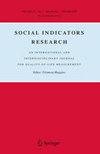民族文化与财政能力:一个全球视角
IF 2.8
2区 社会学
Q1 SOCIAL SCIENCES, INTERDISCIPLINARY
引用次数: 0
摘要
在国家一级评估财政能力的起源可以追溯到社会经济和生活质量因素。然而,民族文化的作用应该被认为同样重要。因此,假设民族文化的差异与国家层面的平均财务能力水平相关。本研究试图回答一个重要的问题:在国家层面上,文化与经济能力之间的关系是什么?本研究的数据来自世界银行(两个数据集)、联合国和Hofstede Insights提供的四个不同来源。最终的数据集包括来自137个国家的数据。作为财务能力的衡量标准,我们使用综合指数结合财务行为(账户所有权)和财务知识。文化是通过Hofstede Insights的国家文化的六个维度来衡量的:权力距离、男子气概、不确定性规避、个人主义、长期取向和放纵。研究结果表明,即使在控制了经济发展水平之后,文化的某些维度与国家层面的财务能力仍有很强的相关性。财务能力与个人主义、长期取向和放纵三个文化因素之间存在正相关关系。此外,不确定性规避与财务能力呈负相关。观察到的关系是非线性的。具体而言,个人主义和长期取向在一定程度上(0-100分,分别为75分和50分)与财务能力呈正相关,个人主义在25分开始呈正相关,不确定性规避在75分之前呈负相关。本文章由计算机程序翻译,如有差异,请以英文原文为准。

National Culture and Financial Capability: A Global Perspective
Abstract The origins of financial capability assessed at the country level can be traced back to the socio-economic and quality of life factors. However, the role of national culture should be considered equally important. Hence, differences in national culture are hypothesized to correlate with average financial capability levels at the country level. This study attempts to answer an important question: What is the relationship between culture and financial capability at the country level? The data for this study originate from four diverse sources provided by the World Bank (two datasets), United Nations, and Hofstede Insights. The final dataset includes data from 137 countries. As a measure of financial capability, we use an aggregate index combining financial behavior (account ownership) and financial knowledge. Culture is measured using six dimensions of national cultures from Hofstede Insights: Power Distance, Masculinity, Uncertainty Avoidance, Individualism, Long-Term Orientation, and Indulgence. The results show that certain dimensions of culture are strongly correlated with financial capabilities at the country level even after controlling for the level of economic development. Positive relationships between financial capability and three cultural factors—Individualism, Long-Term Orientation, and Indulgence—are noted. In addition, Uncertainty Avoidance is negatively associated with financial capabilities. The observed relationships are non-linear. Specifically, Individualism and Long-Term Orientation are positive correlates of financial capability up to a certain level (the score of 75 and 50, respectively, on the scale 0–100), Individualism is a positive correlate starting at the score of 25, while Uncertainty Avoidance is a negative correlate up to the score of 75.
求助全文
通过发布文献求助,成功后即可免费获取论文全文。
去求助
来源期刊

Social Indicators Research
Multiple-
CiteScore
6.30
自引率
6.50%
发文量
174
期刊介绍:
Since its foundation in 1974, Social Indicators Research has become the leading journal on problems related to the measurement of all aspects of the quality of life. The journal continues to publish results of research on all aspects of the quality of life and includes studies that reflect developments in the field. It devotes special attention to studies on such topics as sustainability of quality of life, sustainable development, and the relationship between quality of life and sustainability. The topics represented in the journal cover and involve a variety of segmentations, such as social groups, spatial and temporal coordinates, population composition, and life domains. The journal presents empirical, philosophical and methodological studies that cover the entire spectrum of society and are devoted to giving evidences through indicators. It considers indicators in their different typologies, and gives special attention to indicators that are able to meet the need of understanding social realities and phenomena that are increasingly more complex, interrelated, interacted and dynamical. In addition, it presents studies aimed at defining new approaches in constructing indicators.
 求助内容:
求助内容: 应助结果提醒方式:
应助结果提醒方式:


